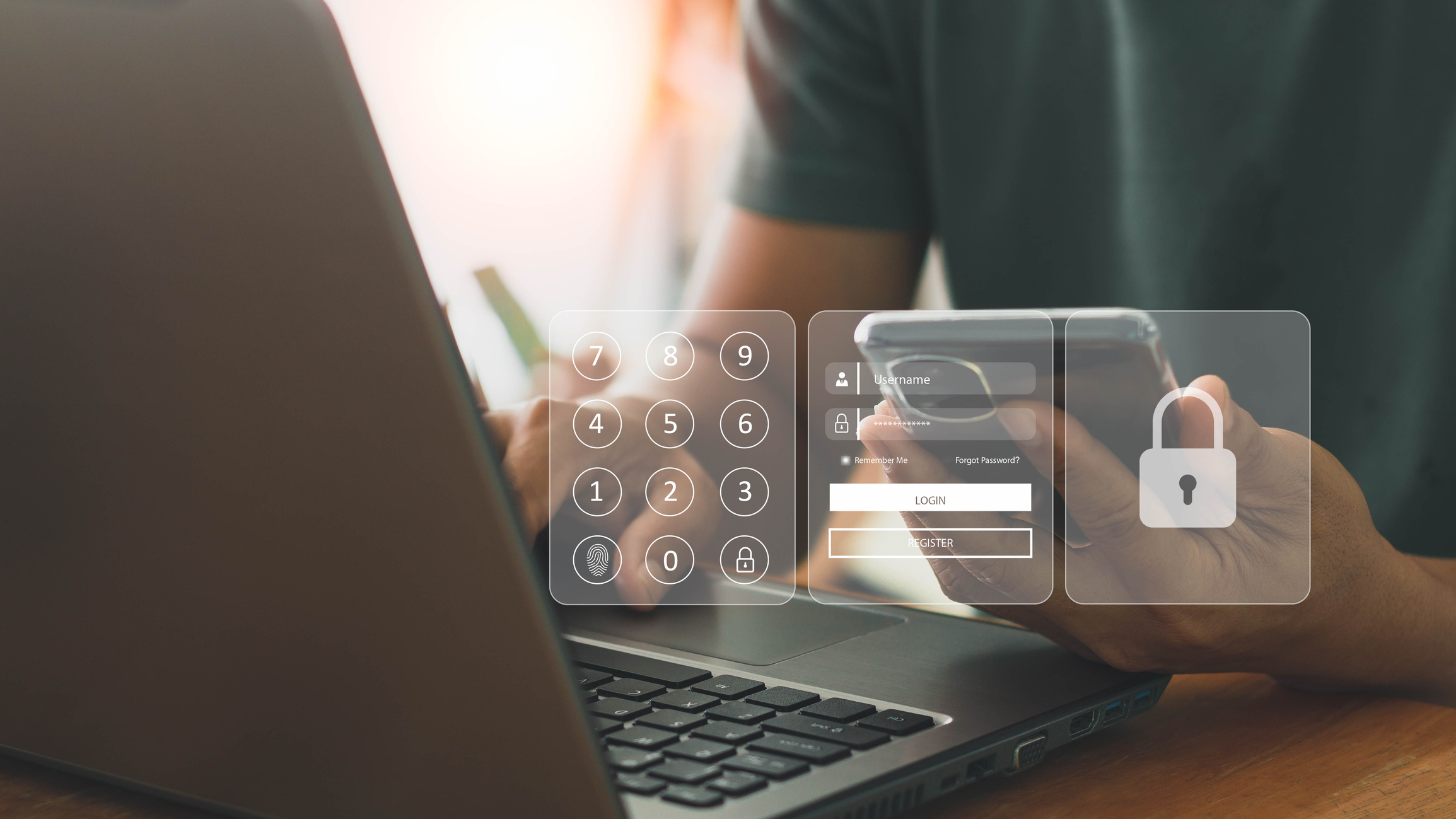It’s hard to ignore the buzz around these days. Business owners, in particular, exhibit a keen interest in safeguarding their ventures against ever-evolving cyber threats. With cybercriminals continually inventing new tactics, it’s vital to take action to protect your data and ensure your business keeps running smoothly. We’ve put together a list of 8 easy to implement tips to keep your employes, your clients, and your business secure.
1. Educate Your Team
Your first and most critical line of defense against cyber threats is your team. Ensuring that your employees are well-versed in cybersecurity best practices is not just important but essential. Through training, your employees gain the skills to spot sneaky phishing emails that try to trick them into revealing sensitive information or downloading malicious content. They feel empowered to spot phishing attempts and report them to your IT team, keping your sensitive data secure. Your team is your first line of defense to fend off cyber threats at every turn.

2. Use Strong, Unique Passwords
Encourage your team to create passwords that are both strong and unique for each of their accounts. We live in an interconnected world, where everything from work emails to personal finances relies on passwords; their importance cannot be overstated. Start by inspiring your team to get creative, avoiding common pitfalls like using “123456” or “password” as their gateways to important data. To add an extra layer of security, consider introducing a policy for periodic password changes. This proactive approach ensures that even if a password somehow falls into the wrong hands, it becomes outdated before any damage can be done. To simplify the task of managing a multitude of strong passwords, think about implementing a password manager. This nifty tool not only generates and securely stores credentials, but it also makes logging in a breeze, taking away the headache of having to remember complex combinations. By championing these practices, you are not only safeguarding your organization’s digital assets but also empowering your team to navigate the digital world confidently.

3. Multi-Factor Authentication (MFA)
Introducing an additional layer of security is a wise and strategic decision. Multi-Factor Authentication (MFA) significantly raises the bar for unauthorized users trying to access your systems, even if they somehow acquire your password. MFA works by requiring users to provide more than just a password; it demands multiple forms of verification. Even if someone cracks your password, they will face the challenge of obtaining these additional verifications, such as a time-sensitive code sent to your phone or a biometric scan like a fingerprint. This multi-layered approach makes it exceptionally difficult for cybercriminals to breach your defenses. Essentially, MFA acts as a robust safeguard, ensuring that only authorized individuals can access your digital world. In the ever-evolving world of cybersecurity MFA is a simple yet effective way to stay secure.
4. Keep Software Updated
Cybercriminals are known for their relentless pursuit of vulnerabilities, often zeroing in on outdated software that’s riddled with known weaknesses. To keep your digital environment secure, it’s essential to take a proactive approach. That means regularly updating all your software – from your operating systems to your applications – with the latest security patches.
Think of these patches as protective layers that keep your digital infrastructure strong. They work like regular check-ups for your systems, fixing any weak points and making sure they’re ready to face new threats. Neglecting software updates is like leaving your front door unlocked, an open invitation for trouble. But staying on top of these updates is like locking that door, securing your digital space, and sending a clear message to cybercriminals that your assets are well-defended.

5. Use Firewalls and Antivirus Software
To ensure the security of all your devices, it’s crucial to install and regularly update firewalls and antivirus software. These tools act as protective barriers, detecting and blocking malicious activities before they can cause any harm. Keeping them up-to-date ensures that your devices have the most recent defenses against evolving cyber threats. In the world of cybersecurity, these measures are an essential defense against a constantly changing landscape of digital risks. By investing in these protective measures, you’re strengthening the security of your devices, safeguarding them in this interconnected digital era. Proactive protection is your key to digital peace of mind.
6. Encrypt Sensitive Data
Safeguarding sensitive data, such as customer or financial information, is absolutely critical. This is where encryption plays a pivotal role. Encryption is like an unbreakable code that jumbles up your data, making it completely unreadable to anyone without the right key. Whether your data is on the move or sitting on a device, encryption ensures it stays safe. So, when you send sensitive information online, even if someone tries to intercept it, all they get is a bunch of scrambled characters. And when your data is at rest, like on a server or a device, encryption keeps it locked up tight. Even if someone physically gets their hands on your hardware, they won’t be able to make any sense of the data without that special key. In a world where data is incredibly valuable and cyber threats are a constant concern, encryption is your best friend, ensuring your sensitive information remains protected and your digital defenses stay strong.

7. Back Up Your Data and Have a Recovery Plan
Regularly backing up your critical data and systems is a bit like having a safety net for your digital world. It’s your way of ensuring that if something goes wrong, like a cyberattack, you won’t lose everything. Think of a backup like creating copies of all your important files and systems and keeping them in a secure place. Now, think about this: what if the unexpected happens? A cyberattack, like a ransomware attack, could suddenly lock you out of your own data. That’s where your disaster recovery plan steps in. Think of it as your well-thought-out playbook for handling digital crises. It spells out exactly what to do to get back on track quickly. In the world of cybersecurity, these practices are your lifeline. They ensure that your business can weather any storm, recover from any attack, and come out of it even stronger than before. So, remember, in the realm of cybersecurity, being prepared and proactive can be the difference between a minor setback and a major catastrophe.
8. Create an Incident Response Plan
Being prepared for the worst is absolutely essential in cybersecurity. Think of it as having a well-thought-out plan ready to go. This plan, known as an incident response plan, is like a set of instructions for your team on how to deal with unexpected events, such as a cyberattack. It outlines the steps to take when something goes wrong. For instance, it explains how to contain the breach, like sealing off any digital openings to prevent further damage. It also covers the crucial aspect of notifying those who might be affected, ensuring everyone is aware and informed. Lastly, it guides you through the recovery phase, helping you learn from the incident and get back on your feet. In cybersecurity, having this plan is like having a protective cushion. It ensures that when the unexpected occurs, your organization can respond effectively, minimize harm, and recover swiftly. When it comes to cybersecurity, preparation is your best ally.

Strengthen Your Cybersecurity with Professional Computer Concepts’ Expertise
Fortifying your cybersecurity is not just a choice; it’s a necessity in today’s digital landscape. These eight practical strategies provide a strong foundation to safeguard your business against evolving cyber threats. Yet, cybersecurity is a dynamic field, demanding ongoing vigilance and adaptation.
Navigating this intricate terrain is daunting, but you don’t have to face it alone. Partner with Professional Computer Concepts, Bay Area IT Support specialists, for personalized guidance and tailored solutions that elevate your cybersecurity defenses. Don’t wait until the unthinkable happens—take charge of your digital resistance today. Contact us now to secure your business, its data, and its reputation in this interconnected world. With our expertise by your side, you can confidently face the challenges of cybersecurity, ensuring a resilient and protected future for your organization.

